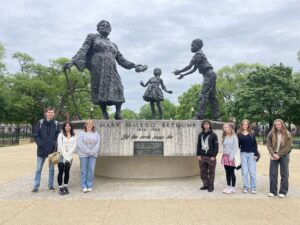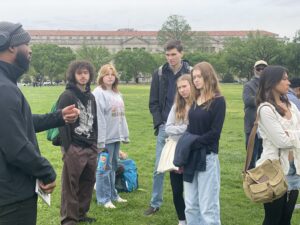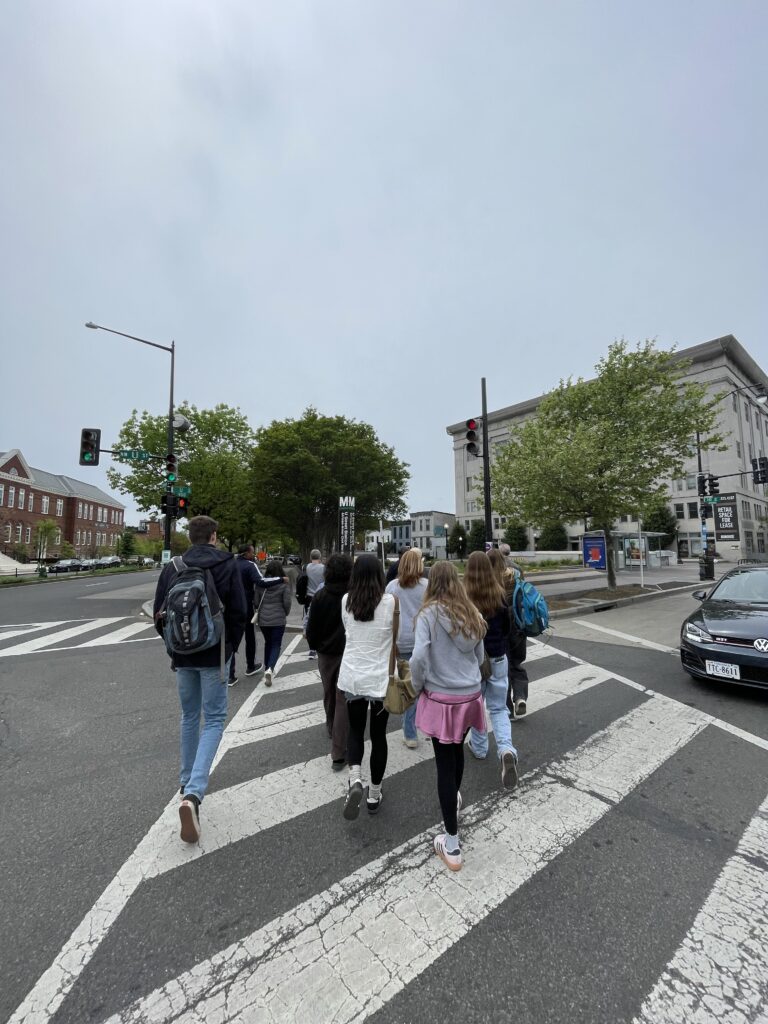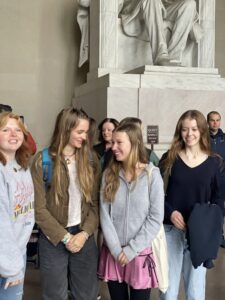African American History Guided Tour

“All Gave Some; Some Gave All”

Our tour guide, Dré, said it well: “Learning history is like looking through a prism; how you see it depends on which way you look through it.” Today, my classmates and I went on the African American History Tour. We visited memorials and monuments that represent both beautiful and admittedly ugly aspects of American history. Many of the memorials and monuments have a history and a meaning that lie beneath what the eye can see, and learning about them offers an enlightening view of American history. For example, it was enlightening to learn about why the marble in the Washington Monument is two different shades. Dré explained that the first third of the monument was built by slaves using one kind of marble, while the other two thirds was built after the Civil War, using another kind of marble. While some Americans might know that the monument is two different shades, probably few know why this is the case and what it represents for American history.
“All gave some; some gave all.” This quotation is etched into the Vietnam Memorial, commemorating the sacrifices of all the young men who lost their lives in the Vietnam War. Our country is built on sacrifice, and I think this quotation perfectly summarizes the heartbreaking reality of these sacrifices. Today we visited the memorials to some of those who made the greatest sacrifice for our country, and our presence at the memorials served to honor their stories. My main takeaway from today’s trip is this: to learn the true history of our country, one must look at it from as many perspectives as possible, because much of what we believe we know may not be accurate, and in order to give thanks for our own lives and liberties, we must honor those who sacrificed their own.

“To understand someone’s life, you have to look outside of what they do for a living”
I was struck by this sentence today as I sat on the bus listening to our tour guide, Dré, tell us about the sometimes hidden meanings of many of the statues here in DC. I had been feeling stuck as I worked on questions for our interviews later in the week, and I was not feeling inspired. Listening to Dré, I realized that I was focusing too much on what our interviewees do for work and what they have accomplished. After thinking about Dré’s comment, I realized that I’m not as interested in getting to know our interviewees through their work as I am in getting to know them by hearing about what excites them outside their work. That I had been focusing on their jobs says something about how American society tends to define people by their jobs and their place in the economy, instead of by their interests and passions. I remember talking to Shannon in our Values class about how the first question she is asked when meeting new people is “what do you do?” and how the answer is always expected to be about one’s work.

Because we have been conditioned to focus on work and the economy, I don’t blame people for asking that question. I have done the same thing, but I think we can change, and I think that we can live more fulfilling lives if we do change.
As we begin our week here in DC, I’m looking forward to testing this new perspective, and trying to learn who the people who work in public service really are.

You wake up today choosing who you can be tomorrow
This is my first time in Washington, DC, and so far I have been amazed by its architecture. The buildings range from colorful houses and condos to stunning granite memorials and monuments. However, it is not always possible to understand the history that the monuments represent simply by looking at them. Both the placement and the architecture of a monument are important, but sometimes a story needs to be told to reveal the history.
Today we took the African American History tour, and it was amazing. Our guide Dré explained the contrast between the Mary McLeod Bethune memorial and the Abraham Lincoln memorial, which are placed directly across from one another in Lincoln Park. Dré explained that while Lincoln’s statue looks finished, Bethune’s does not. Further, while Lincoln’s character appears more complicated the more one studies him, Bethune’s appears clearer the more one studies her. The ironic contrast between their styles and imagery helps one understand both the statues and the history behind them, reflecting the complicated culture that we have encountered in DC. Dré explained how the statues can help us understand ourselves: “You wake up today choosing who you can be tomorrow.”



You must be logged in to post a comment.